The Day of the Dead, or Día de los Muertos, originated in ancient Mesoamerican cultures and the festivities that honored the Aztec god Mictlantecuthli. These festivities took place during the whole ninth month of the Aztec calendar. However, Dia de los Muertos or something very similar was already celebrated by many Indigenous people that were predecessors of the Aztecs.
Table of Contents
What is the Origin of Day of the Dead?
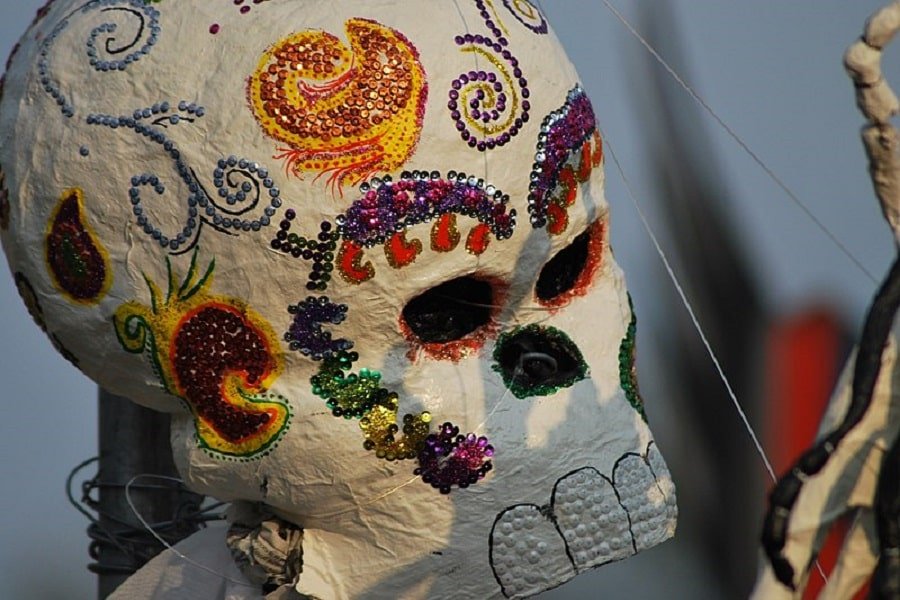
The origin of the Day of the Dead can be traced back to the ancient civilizations that flourished in Mesoamerica before the arrival of the colonizers. Among these civilizations, the Aztecs, Mayans, and Toltecs played significant roles in shaping the traditions surrounding death and the afterlife. Eventually, these traditions were adopted by Indigenous Mexicans, which ultimately laid the foundation for the modern celebration of the Day of the Dead.
READ MORE: Who Discovered America: The First People Who Reached the Americas
What is the Day of the Dead?
The Day of the Dead is a Mexican holiday that celebrates and honors deceased loved ones. It primarily takes place in Mexico and has become an integral part of Mexican culture. Still, variations of the holiday are also celebrated in other communities in parts of Latin America and among the Mexican diaspora worldwide.
The Day of the Dead typically spans two days: November 1st, known as Día de los Angelitos (Day of the Little Angels), which is dedicated to deceased children. The day after, November 2nd, is known as Día de los Muertos (Day of the Dead), honoring deceased adults.
What Religion Started the Day of the Dead?
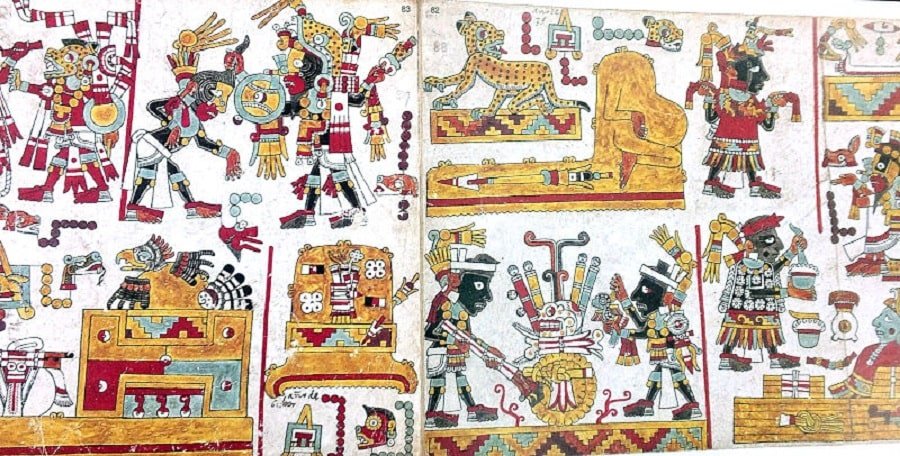
The Day of the Dead sprouted out of the religions that were found in ancient civilizations from Latin America. Particularly, the Aztecs had a deep reverence for death. They believed in an intricate cosmology that interconnected life, death, and the divine. Death was viewed as an essential part of the natural cycle and was essential for the continuation of life through reincarnation. They celebrated these beliefs regularly by worshiping their god of death.
READ MORE: The Aztec Empire: The Rapid Rise and Fall of the Mexica
The view of the Aztecs on death and life is truly distant from many Westernized worldviews from today. Aztec religion saw death as something that allows one to live. Life simply requires death.
What does that mean? It means that one will never die. Or maybe, that dying isn’t the definite end of life. The Aztecs saw death like sleep: it was the much-needed rest that allows a person to gain energy for living again after their reincarnation. It required a long journey through the underworld, or Mictlan, to eventually come back to earth again.
Who or What is Honored/Celebrated on the Day of the Dead?
Originally, Día de los Muertos was the entire ninth month of the Aztec calendar. The Aztecs dedicated the month to honoring both the people that would reincarnate as well as the god that allowed humans to reincarnate. In particular, they honored the god Mictlantecuhtli. The festivities celebrating it were known as Miccailhuitontli or Huey Micailhuitl, which translates to ‘The Great Feast of the Dead’.
READ MORE: The 23 Most Important Aztec Gods and Goddesses
Honoring deceased loved ones is still central today, but the connotations with Miclantecuhtli have faded.
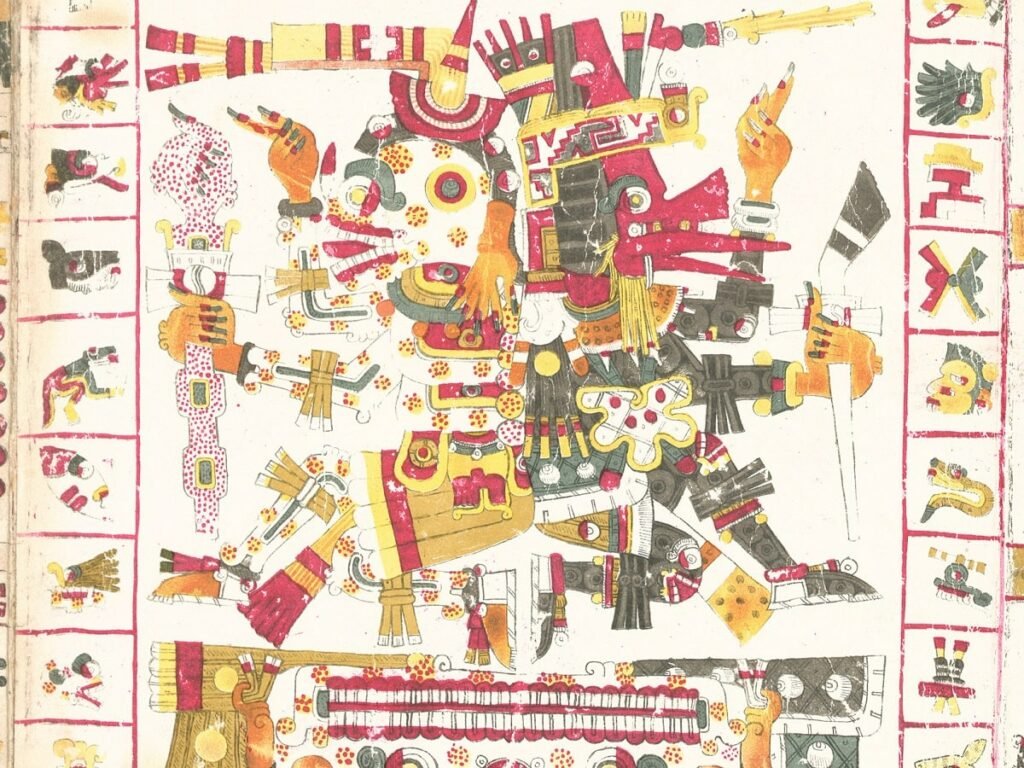
How the Ancient Festivities Looked Like?
The celebrations included elaborate rituals, offerings, and ceremonies to welcome the souls of the dead back into the realm of the living. The Aztecs believed that the dead continued to play an active role in the lives of the living, and their spirits required sustenance and remembrance to ensure their well-being in the afterlife.
They made offerings of food, beverages, flowers, and other items and placed these at specific altars, known as ofrendas, to appease and honor the spirit world. Additionally, the rituals during the month often included human sacrifice as a means of nourishing and sustaining the gods, maintaining cosmic balance, and ensuring the well-being of the deceased in the afterlife.
Creation of Masks
The Aztecs also engaged in various practices to communicate with the dead. They would create masks that represented deceased ancestors and wear them during dances and processions. These dances, known as the Danza de los Viejitos (Dance of the Old Men), were performed to embody the spirits of the dead and celebrate the continuity between the living and the deceased.
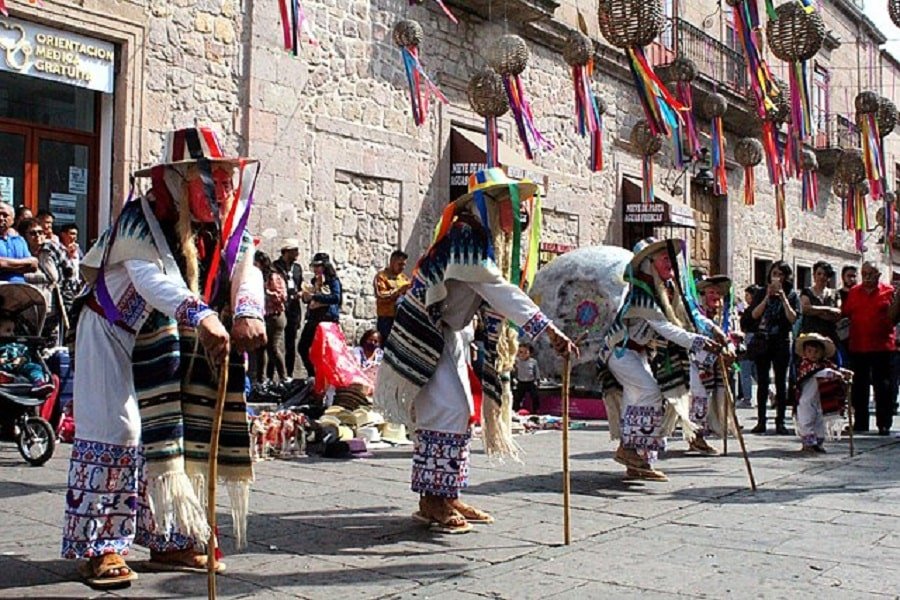
When Did the Day of the Dead Originate?
The exact year or day when the Day of the Dead was first celebrated is unknown. This mostly has to do with colonization and the vanishing of oral history as a way of conveying heritage from generation to generation in ancient Mesoamerican civilizations. It is certain that the Day of the Dead originated long before the arrival of the Spanish colonizers in the 16th century, potentially thousands of years before.
What Does the Day of the Dead Celebrate?
Rather than mourning or somber remembrance, the Day of the Dead is a vibrant and festive dead celebration dedicated to lost loved ones. It is believed that on this day, the souls of the departed return to the earthly realm to reunite with their family members and loved ones. The holiday is a time to welcome and honor the spirits of the deceased with joy, celebration, and remembrance.
What Does the Day of the Dead Symbolize?
While the Day of the Dead celebrates the temporary return of deceased ones to the earth, the symbolism behind Día de los Muertos revolves around the duality of life and death. Additionally, it emphasizes the connection of the community with their ancestors. The ancestors in many Indigenous worldviews are perceived as an active part of the contemporary community. Día de los Muertos is a mechanism that acknowledges this.
Especially in the ancient civilizations on which the Mexican heritage is based, this is what Día de los Muertos was all about. However, With the arrival of the Spanish conquistadors, Catholicism became the dominant religion in the region. This also meant that the Indigenous practices were assimilated into the beliefs of the Catholic church.

Biggest Changes after Colonization
After colonization, the timing of Día de los Muertos was adjusted to coincide with the Catholic calendar. More particularly, they started to coincide with the Catholic feast days of All Saints’ Day and All Souls’ Day. These took place on November 1st and 2nd, respectively.
Over time, the traditions and customs associated with the Day of the Dead continued to evolve, incorporating elements from both Indigenous beliefs and Catholicism. The Mexican version, when compared to the Aztec version, is vastly different because of this. And no human sacrifices are made anymore during contemporary celebrations.
How is the Day of the Dead Celebrated?
The Mexican holiday of Día de los Muertos is celebrated with a range of different traditions. These include makeshift altars called ofrendas, an elegant skull of sugar, pan de muerto, processions, and more. Many of these things arose from a unique blend of many different cultures, including Indigenous practices and Catholicism.
Ofrendras
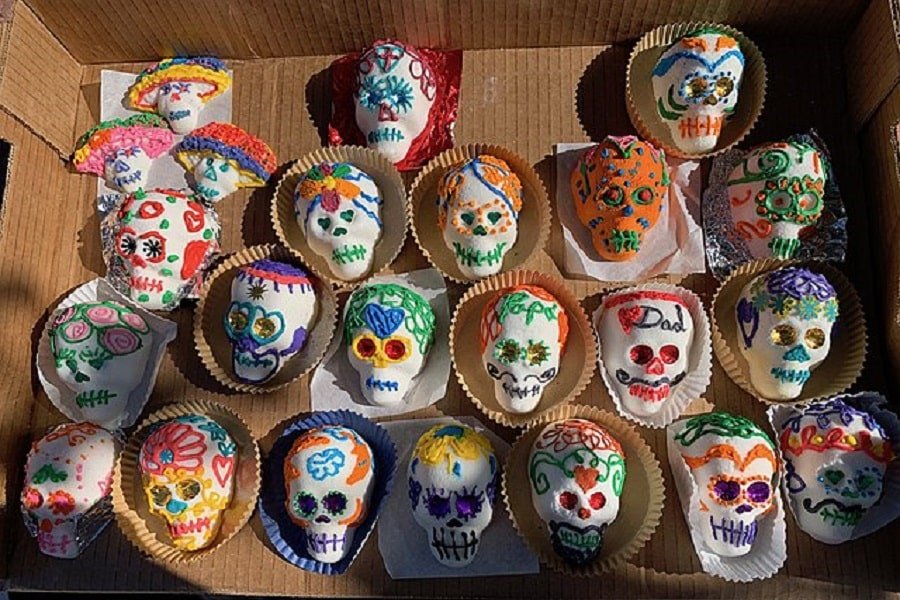
A central feature of the Day of the Dead is the creation of an ofrendra. This is a family altar that is beautifully decorated and dedicated to deceased loved ones. Families construct the altar in their homes or at the gravesites of their relatives. Ofrendas typically include photographs of the deceased, their favorite foods, drinks, and personal possessions.
Calaveras
Sugar skulls, better known as calaveras, are also an iconic symbol of the Day of the Dead. These are basically intricately decorated sweets made of sugar and shaped like skulls. They often bear the names of deceased loved ones and are displayed on the ofrendas or given as gifts.
Additionally, the calacas are an important figure for the holiday. These are the skeleton figurines dressed in vibrant attire. They come in various forms – from miniature sculptures to life-sized figures – and are used to represent the joyful and lively nature of the holiday.
Pan de Muerto
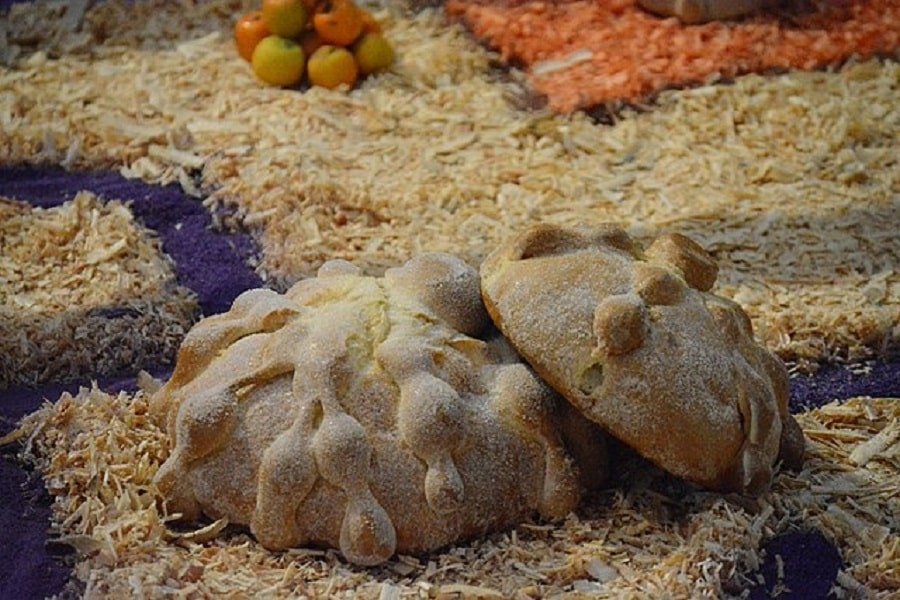
Pan de Muerto, or Bread of the Dead, is a delicious sweet bread that also holds symbolic importance during the holiday. The bread is typically round or oval-shaped and adorned with bone-shaped dough decorations on the top.
It may also have a sugar glaze and be sprinkled with colored sugar. It is believed that by consuming this bread, the living become spiritually connected to their deceased loved ones. The bread is one of the most evident adoptions of the Catholic tradition, since bread is believed to be the body of Christ.
Marigolds and Papel Picado
Marigold flowers, or cempasúchil, are another interesting feature of the Día de los Muertos. Their vibrant orange and yellow hues are believed to guide the souls of the departed back to the world of the living.
Marigolds are used to decorate the ofrendas, gravesites, and homes. Papel picado is another common element. Basically, these are decorative paper banners with intricate designs. The colorful paper cutouts are hung as vibrant streamers and add a festive touch to the celebrations.
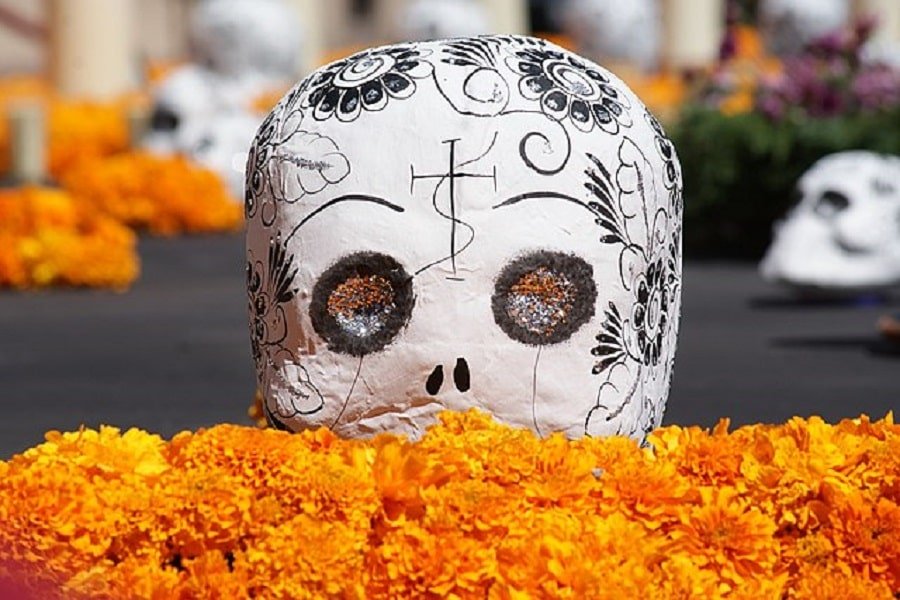
Candlelight Vigils and Processions
Candles are another element that plays a significant role during the Día de los Muertos. They are lit to illuminate the path for the spirits of the departed, guiding them back to their loved ones.
Candlelight vigils and processions take place in cemeteries and streets, where individuals gather to honor and remember their deceased family members and friends. The warm glow of candlelight creates a solemn and serene atmosphere during these gatherings.
Music, Dance, and Festive Celebrations
Lastly, Día de los Muertos is nothing without its music, dance, and joyful festivities. Traditional music such as mariachi, rancheras, and cumbia are played, while people dress in vibrant costumes, with elaborate face painting. Parades and street performances take place, with participants showcasing their exuberance and love for life.
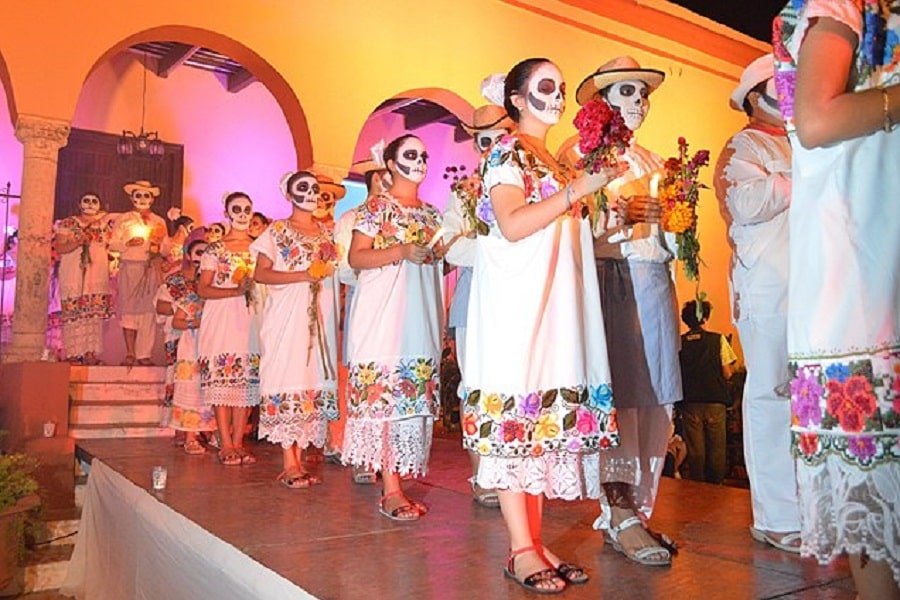
How Many Countries Celebrate the Day of the Dead?
While the scale and specific customs may vary, Dia de los Muertos is recognized and celebrated to some extent in at least seven countries worldwide. The Day of the Dead is primarily celebrated in Mexico. The biggest celebrations take place in Mexico City and Oaxaca. However, variations of the holiday are also observed in other countries – particularly those with significant Mexican communities or cultural influences.
Mesoamerican Countries
Since the tradition started in ancient Mesoamerican cultures, it’s only logical that many countries in this area celebrate the holiday to this day.
In Guatemala, Día de los Muertos is observed in some Indigenous communities, particularly among the Mayan population. The holiday is known as Todos Santos (All Saints) and incorporates both Catholic and Indigenous Mayan traditions.
Also, in some regions of Ecuador (particularly in the Sierra and the Andes), Día de los Muertos is celebrated as the Day of the Deceased (Dia de los Difuntos). Families visit cemeteries, clean and decorate graves, and share meals in remembrance of their loved ones.
Día de los Muertos is also recognized in Bolivia, especially in the cities of La Paz and Sucre. The holiday is observed with cemetery visits, the lighting of candles, and the preparation of traditional foods.
In certain regions of Peru, particularly in the Andean highlands, a similar holiday called Día de los Difuntos (Day of the Deceased) is celebrated. Also In the northeastern state of Bahia, Brazil, Día de Finados (Day of the Dead) is celebrated on November 2nd.
Día de los Muertos also has gained popularity and recognition among Mexican-American communities in the United States. It is celebrated in many cities and regions with large Mexican populations, such as Los Angeles, Chicago, and San Francisco. Still, San Antonio takes the crown: the Texan city hosts the largest celebration of Día de los Muertos in the United States.